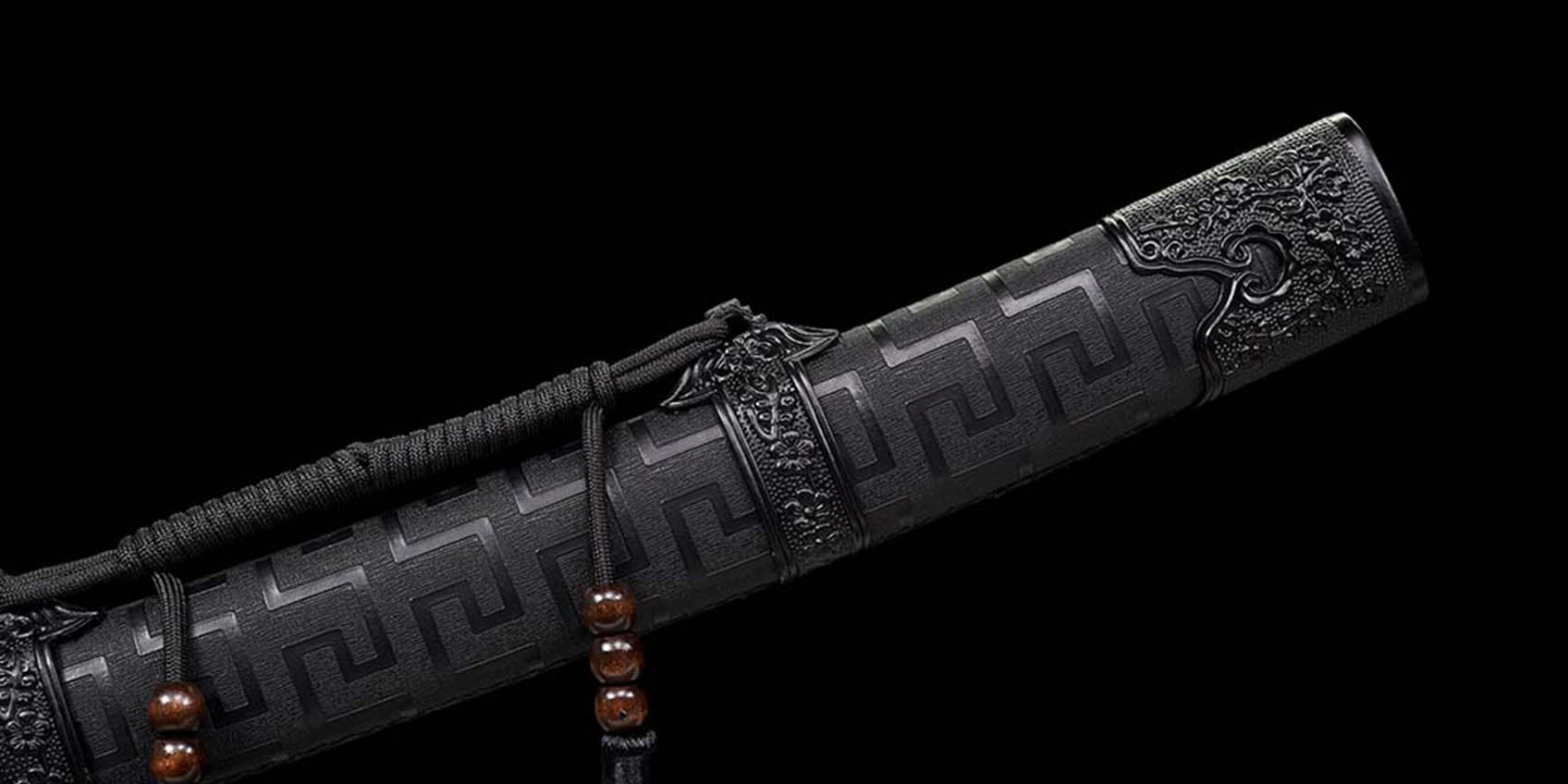Custom Sword: Scabbard Artistry & Cultural Fusion

How much is a samurai sword?
Some friends might ask, ‘What budget do I need to buy my ideal samurai sword?’ Besides the commonly priced options, there are custom models where every part of the blade can be tailored to personal preferences.
Next, we will introduce the story behind the saya (scabbard) of the samurai sword.
The History and Legacy of the Samurai Sword
The samurai sword, as a symbol of Japanese culture, not only showcases exceptional craftsmanship in its sharp blade but also embodies rich cultural connotations and sophisticated techniques in its exterior and accessories. In this article, we will briefly introduce the saya (scabbard) of the samurai sword and its related fittings, helping you better understand this complex and fascinating system.

Koshirae and Shirasaya
Koshirae: Koshirae refers to the fully assembled state of the katana, including the blade, handle, saya, and other fittings. Depending on the different assembly methods, koshirae can be subdivided into various forms. It is not only a protective cover for the samurai sword but also a significant aspect of its artistic value.
Shirasaya: Shirasaya is a simple wooden scabbard usually used to store the sword when not in use. It is primarily made of magnolia wood and has a simple appearance, effectively protecting the blade from external environmental influences.
Materials of Samurai Sword Saya
The saya and handle of the samurai sword are typically made of wood, with magnolia being a common material. However, some sword fittings are entirely made of metal, such as iron, yamagane (crude copper), suaka (reddish pure copper), shakudou (black-purple copper-gold alloy), and shibuichi (a copper-silver alloy with more than one-quarter silver content, appearing grayish-green). These metals not only give the saya different textures and colors but also enhance their collectible value.

Classification of Koshirae
Based on the sword’s form, koshirae can be divided into tachi koshirae and uchigatana koshirae.
Tachi Koshirae: Originating from cavalry use, the main feature of tachi koshirae is the presence of two ‘ashi-kanamono’ (fittings for hanging) on the saya, facilitating wearing while on horseback. The tachi is worn edge-down, hanging from the waist. After the Edo period, due to historical changes and various laws, tachi koshirae became less common.
Uchigatana Koshirae: More common than tachi koshirae, uchigatana koshirae involves wearing the katana edge-up, inserted into the waistband, making it easier to draw in ground combat.
Ornate Tachi Koshirae
Ornate Tachi Koshirae: This type of koshirae originated in the Heian period, with its form closely resembling the exterior of Tang dynasty swords from China. Initially used for significant occasions like imperial court ceremonies, those who wore these swords had strict rank and attire requirements.

The two key features of ornate tachi koshirae are:
1. Yamagata-Kan: Large fittings on the ‘ashi-kanamono’ used for attaching two ‘ashi-kawa’ (straps).
2. Tang Tsuba: The sword guard is designed similarly to Tang dynasty sword guards, known in Japan as ‘Tang Tsuba.’
Collectible Value of Tsuba
The tsuba (guard) of the samurai sword is a crucial fitting, with intricate design and craftsmanship. Renowned auction houses like Sotheby's often hold tsuba-specific auctions, where an unassuming iron tsuba can fetch tens of thousands of dollars. Some collectors own thousands of tsuba, highlighting their high collectible value.

Conclusion
The exterior and fittings of the samurai sword are not merely tools for protecting the blade but are also art pieces showcasing Japanese culture and craftsmanship. Understanding these exquisite details allows you to appreciate the beauty of the samurai sword more deeply and to comprehend the history and culture behind it. Whether it is koshirae, shirasaya, or tsuba, each part is worth in-depth study and admiration. We hope this brief introduction opens a window for you to explore the saya of the samurai sword and inspires further interest in this fascinating subject.
Modern Cultural Evolution and Personalization
With the evolution of modern culture and the rise of personalization, the saya of the cool katana has seen an expansion in options. From color to material, from traditional wood to modern metals, the design of the saya has become increasingly diverse. This change not only meets contemporary aesthetic and functional demands but also offers collectors more possibilities for personalization. Whether pursuing traditional aesthetics or favoring modern styles, enthusiasts can customize their saya, making each sword a unique artwork. This personalized customization service enriches samurai sword collection, fully reflecting each collector's unique taste and aesthetic sensibility.
Our shop offers a wide range of customized services


At some events, fans demonstrate their swordsmanship skills, paying tribute to anime's legendary battles. Conventions even hold swordsmanship competitions, letting enthusiasts showcase their passion and creativity with these iconic weapons. Certain anime weapons hold special significance for fans, influencing anime swordsmanship and sparking interest in related merchandise. Celebrations at various anime events further boost their popularity. These weapons symbolize strength and courage, leaving a lasting mark on the anime world.

